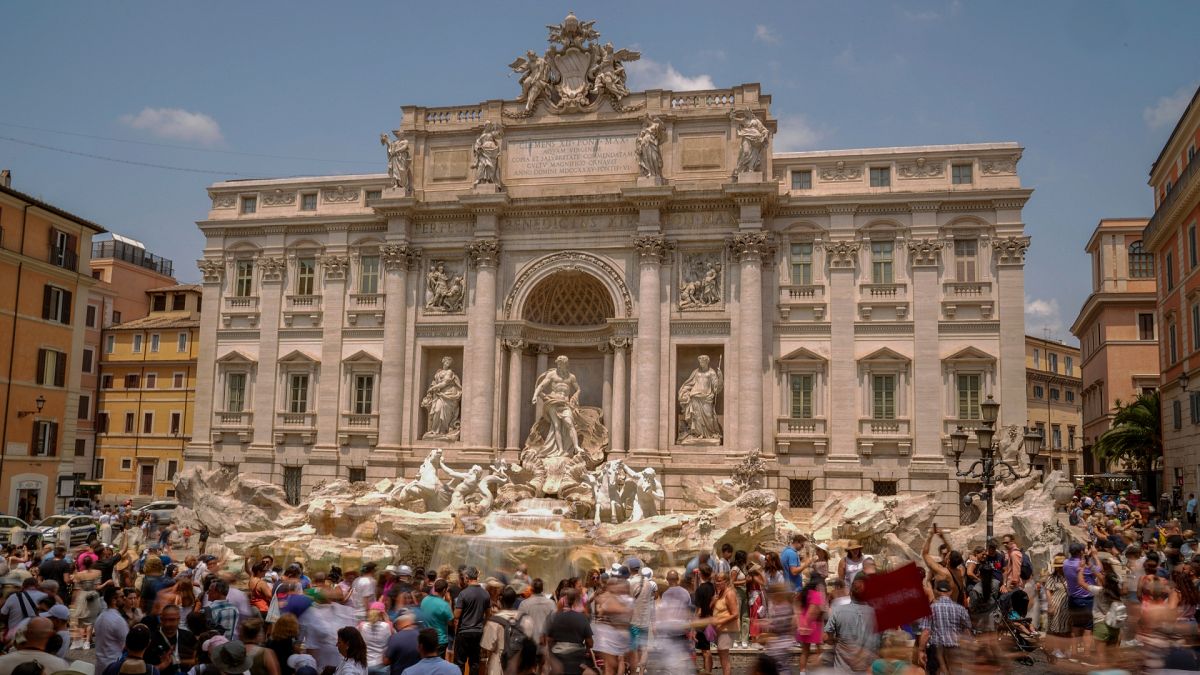Even in some of the most visited countries in the world, there are still unspoiled destinations to discover. Tourists are becoming unwelcome in Europe's hotspots. Barcelona protesters have , Venice now charges day trippers, and Dubrovnik limits the number of visitors.
Top destinations are fighting back, with locals erecting fences and scrawling graffiti telling tourists to "go home." If the conflict between tourism cash and weary locals doesn't appeal, head for Europe's lesser-visited destinations. There, you can bask in the knowledge that the lack of welcome, high costs, fully-booked accommodation, and less-than-optimal service due to visitor numbers won't affect you.

France may have asked visitors to avoid its top 20 per cent of attractions, but that still leaves 80 per cent to be explored. The most visited country in the world is chock-full of hidden gems devoid of tourists. One easy way to find lesser-known spots is to take a French road trip and program satellite navigation systems to avoid toll roads.
Rural France is revelatory - roam between impossibly gorgeous villages, stop for a cosy lunch, sample olive oil, and toast to a grand escape. Those dreaming of the beach can head to the West Coast, where the Atlantic waves crash against miles of sand. The towns of Biarritz, Arcachon, and La Rochelle offer cosmopolitan French culture.
Recent Google and Deloitte research says Spain will overtake France as Europe's most visited country by 2040. There's plenty of time to take advantage of all Spain offers until then. A lively and colourful country with heat and passion in its veins, Historic cities, rugged mountain ranges, and a wild Atlantic coast make Spain ripe for broader exploration.
Mass tourism has yet to overtake and undeveloped attractions. The country is a place for real adventure. The Blue Eye, Ottoman cities, and beaches to rival the Caribbean are Albania's most well-known attractions, but the real beauty lies within hidden canyons, vast lakes, and hard-to-reach mountains.
Don't expect the culture of France or the well-oiled tourist machine of Spain. Albania is still finding its feet in an explosion of interest and hype. Italy is a powerhouse, home to some of Europe's most visited cities.
But it can . A Tuscan road trip offers travellers respite from crowds and opens up the region's famous landscapes and hill villages. For a more authentic, rural experience, opt for "agriturismos," or agricultural tourism, rather than hotels.
Some working Italian farms, akin to bed-and-breakfasts, offer guests cosy lodging and warm meals. Head south to find the "real" Italy, where mass tourism overwhelms the region's culture and beauty. The coastal towns of Puglia, Sicily's archaeological ruins, and Calabria's unspoiled beaches outclass many northern Italian attractions.
The small yet picture-perfect country of the Netherlands packs a punch but remains relatively undiscovered outside of . Intimate, walkable cities and an unexpectedly glorious landscape comprising canals, windmills, and around 24,685 hectares of photogenic tulip fields. An excellent rail network makes the Netherlands easily navigable, and nowhere is more than three hours from Amsterdam by train.
Cities like Rotterdam and Groningen are within easy reach. Lisbon and Porto offer culture, history, and attractions that rival better-known neighbours. Maximise time in the tiny country by moving or vice versa, as only 200 miles separates the cities.
Leaving one for the other lets tourists seamlessly explore Portugal's historic sites, vineyards, and Atlantic coast without sacrificing too much valuable free time. Navigate from Nazaré's striking oceanside and big waves to UNESCO sites like the Monastery of Batalha and Fátima, awash with religious fervour. Between cities, visit Torres Vedras' vineyards just north of Lisbon.
culture blends influences from Croatia, Italy, Austria, and Hungary. While the Julian Alps dominate in the north, Triglav National Park is a highlight. Mount Triglav, the pristine Lake Bled, and Lake Bohinj offer adventure and outdoor activities among diverse flora and fauna.
The mountains give way to the Karst region of the south. Underground rivers and extensive UNESCO cave systems entice visitors on day trips from the Adriatic coast, which has a distinctly Venetian feel. Though well-known German attractions like Munich's Oktoberfest and Nuremberg's Christkindlesmarkt draw tourists in droves, Germany's lesser-known towns remain flush with sublime architecture and refined culture.
With over 150 themed road trips and tourist routes, Germany is doubling down on its and road systems to get visitors off the beaten path to see even more of the country. Pick from themes such as castles, fairy tales, half-timbered houses, wine, and even asparagus. The two best-known routes are the Romantic Road, a delightful journey through some of southern Germany's prettiest towns, and the German Alpine Road, a thrilling drive through the mountains of Bavaria.
If the historic cities of Europe have started to feel too busy and a bit same-y, offers the perfect respite with its wide open spaces and Viking history. The Western Fjords offer stupendous scenery and daring outdoor activities like swimming, ziplines, and hiking. Though images of overcrowding at Trolltunga and Preikestollen often appear on Instagram, push the boundaries a little to find noteworthy treks with fewer people.
Further north, the Kystriksveien Coastal Route is perfect for a road trip. The road bends and dips along the fringe of coastal islands and inlets towards the beautiful Lofoten Islands and the Arctic Circle. Despite the headlines, much of Europe remains untarnished by anti-tourist sentiment.
With a bit of research, apprehensive adventurers can still find many places internationally that warmly welcome out-of-towners. This article was produced by Media Decision and syndicated by Wealth of Geeks..



















